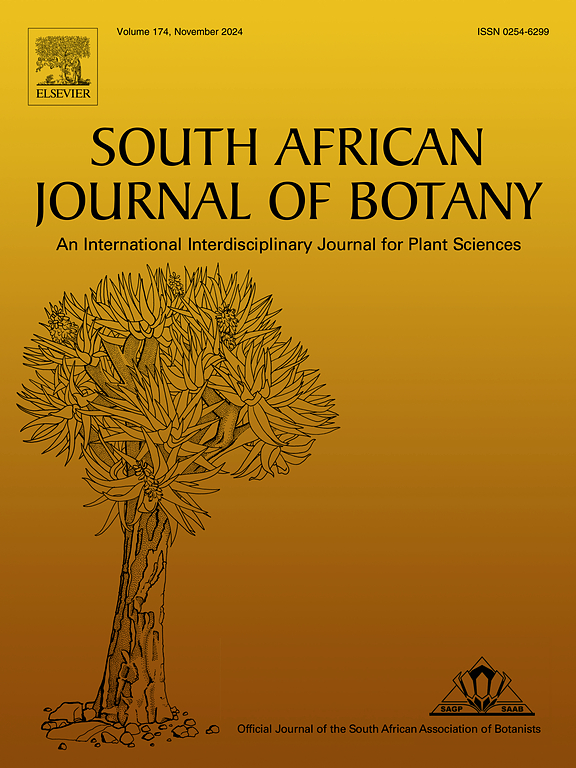四种花椒精油对党参昆虫和优势腐菌的生物活性研究
IF 2.7
3区 生物学
Q2 PLANT SCIENCES
引用次数: 0
摘要
本研究初步评价了4个花椒品种花椒精油的组成及其对党参的杀虫和抑菌作用。采用水蒸气蒸馏法提取植物精油,采用气相色谱-质谱联用技术进行分析。采用接触法、熏蒸法和驱避法测定了该药剂对苏里南稻瘟菌的杀虫性能。随后,从自然污染的党参中分离到优势腐败真菌,根据形态特征和rDNA ITS分析,鉴定为曲霉、红青霉、花柱青霉、假青绿曲霉和田纳西曲霉。测定了精油的最小抑菌浓度(MIC)和最小杀真菌浓度(MFC)。气相色谱-质谱联用分析证实,4个花椒品种精油中主要化合物为d-柠檬烯(33.29%)、3-蒈烯(65.87%)、sylvestrene(79.1%)和sylvestrene(64.83%)。柳越品种挥发油具有显著的杀虫、抑菌活性(LC50=10.68 mg/L, LD50=10.13 mg/L, MIC=1.88 μL/mL, MFC=3.25 μL/mL)。因此,进一步挖掘柳岳花椒精油对党参的保护潜力是有益的。本文章由计算机程序翻译,如有差异,请以英文原文为准。
Bioactivity of essential oils extracted from four varieties of Zanthoxylum bungeanum against insects and dominant spoilage fungi in Codonopsis pilosulae
This preliminary study assessed the composition of essential oils from four different varieties of Zanthoxylum bungeanum and their effectiveness as insecticides and antifungals in preserving Codonopsis pilosula. The essential oils from the plants were extracted via hydrodistillation and subsequently analyzed using gas chromatography-mass spectrometry. The insecticidal properties against Oryzaephilus surinamensis were tested through methods including contact, fumigation, and repellence. Subsequently, dominant spoilage fungi were isolated from naturally contaminated Codonopsis pilosula and identified as Aspergillus sp., Penicillium rubens, Penicillium corylophilum, Aspergillus pseudoglaucus, and Aspergillus tennesseensis based on morphological traits and rDNA ITS analysis. The minimal inhibitory concentration (MIC) and minimum fungicidal concentration (MFC) of the essential oils were determined. Gas chromatography-mass spectrometry confirmed the presence of d-limonene (33.29 %), 3-carene (65.87 %), sylvestrene (79.1 %), and sylvestrene (64.83 %) as the main compounds found in the essential oils of the four Zanthoxylum bungeanum varieties. Notably, the essential oil from the LiuYue variety demonstrated significant insecticidal and antifungal properties (LC50=10.68 mg/L air, LD50=10.13 mg/adult, MIC=1.88 μL/mL, MFC=3.25 μL/mL). Consequently, it may be beneficial to explore the potential of LiuYue Zanthoxylum bungeanum essential oils for preserving Codonopsis pilosula.
求助全文
通过发布文献求助,成功后即可免费获取论文全文。
去求助
来源期刊

South African Journal of Botany
生物-植物科学
CiteScore
5.20
自引率
9.70%
发文量
709
审稿时长
61 days
期刊介绍:
The South African Journal of Botany publishes original papers that deal with the classification, biodiversity, morphology, physiology, molecular biology, ecology, biotechnology, ethnobotany and other botanically related aspects of species that are of importance to southern Africa. Manuscripts dealing with significant new findings on other species of the world and general botanical principles will also be considered and are encouraged.
 求助内容:
求助内容: 应助结果提醒方式:
应助结果提醒方式:


